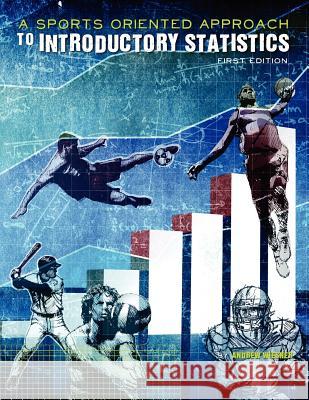A Sports-Oriented Approach to Introductory Statistics » książka
A Sports-Oriented Approach to Introductory Statistics
ISBN-13: 9781621316404 / Angielski / Miękka / 2012 / 236 str.
A Sports-Oriented Approach to Introductory Statistics
ISBN-13: 9781621316404 / Angielski / Miękka / 2012 / 236 str.
(netto: 301,34 VAT: 5%)
Najniższa cena z 30 dni: 313,81
ok. 30 dni roboczych.
Darmowa dostawa!
No one can deny the obvious link between statistics and sports, and many a sports fan can reel off a lengthy list of statistics about a favorite team or player. The anthology A Sports-Oriented Approach to Introductory Statistics cleverly combines the study of statistics with the high interest area of sports to create a text that delivers an engaging and effective introduction to statistical principles.
The first several chapters of the book are the statistical and mathematical offensive linemen, often overlooked and under-appreciated, but necessary for gaining a firm understanding of theory and statistics. This prepares students for the principles covered in subsequent chapters.
These later chapters are the skill players of the text, and through them students learn things like how to predict points in the NHL, determine if there is a home field advantage in football, and compare MLB teams to find out if statistically any one team has been the worst over the past ten years.
Each example in the book uses real data from the sports world. The central limit theorem is explained by examining salary data from major league baseball. Understanding probability distribution of a discrete random variable is illustrated through the number of goals scored in the World Cup. Regression analysis is explored through evaluating team performance.
Each chapter of the text includes examples, accompanied by complete, step-by-step solutions. All problems require students to produce extended, well-thought-out answers using the target principles. Symbols and formulas used within chapters are organized at the end of the chapters for easy reference.
This unique approach increases student interest, and delivers important content in a relatable, likeable format. A Sports-Oriented Approach to Introductory Statistics is written for courses in elementary, undergraduate statistics, and is an ideal supplement to standard required texts. The text can also be used as a supplemental text in many math and business courses grounded in statistics.
Andrew Wiesner earned his Ph.D. at the University of Pittsburgh. Currently he is a Lecturer of Statistics at Pennsylvania State University. Dr. Wiesner has been teaching statistics for more than ten years. He successfully combined his passion for education with a life-long love of sports, and supervised several undergraduate Honors theses in which students analyze sports data."











